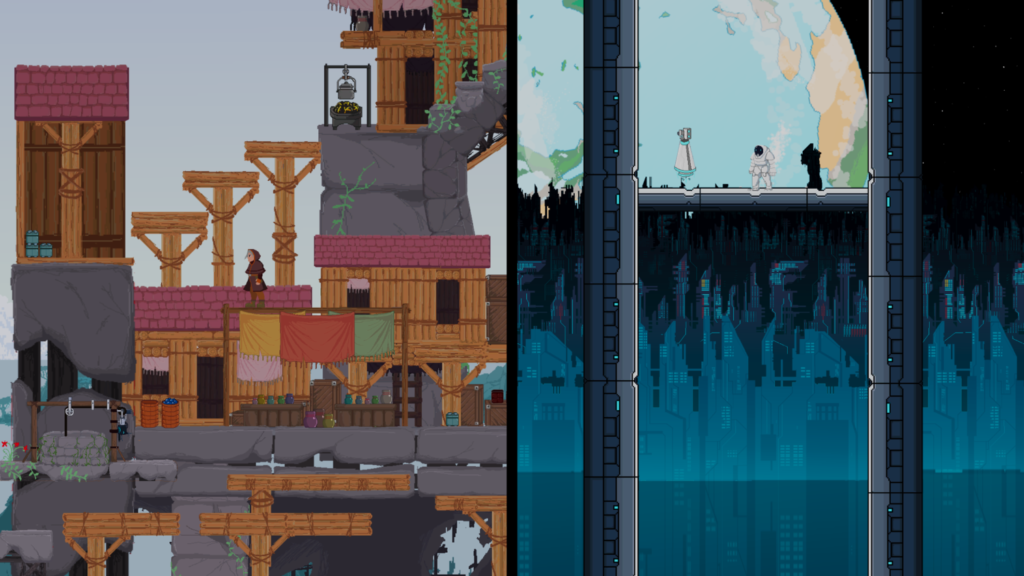Written by Elizabeth LaPensée
Design research is the systematic study of design, development, and evaluation of a product. There are several possible methodologies and methods which can be adapted. Methods fit within a methodology, which is a system of methods for collecting, evaluating, and disseminating data. For example, agile development can be considered a methodology with methods including SCRUM sprint cycles and milestone and iteration tracking conducted through report writing and open-ended team discussions. Methods should always be selected or designed in relation to a particular game.
METHODS
Methods can be adapted from several fields of study. They might involve recording the experience through finite methods including self-reflective writing, taking screenshots, taking open-ended notes, coding notes into categories as they are being written, and/or writing observations about the design as well as possibly observing and/or interviewing playtesters/user testers using specific methods such as open-ended surveys, likert scale surveys, and/ or focus groups.
The following are just a few of the possibilities of methods framed within methodologies:
- Research-Creation: In which the designer creates and writes notes or reflections during the process, then describes the work and their process using writing, screenshots, and possibly video. They may potentially reveal intended meanings or how and why they made certain design decisions as well as their experiences during development, both successes and failures with lessons learned and insights for future work.
- Autoethnography: In which the designer writes about their experiences during design and development and later revisits those writings to adapt into either a case study or a first person experiential story.
- Ethnography: In which a researcher interviews, surveys, and/or observes a designer or designers to gather data and then code it via themes and/or case studies to expand understanding of design and/or development.
As a foundational contribution to design research, Maize Longboat, who is Mohawk from Six Nations of the Grand River, adapted Research-Creation methods during his Master’s thesis on Terra Nova, a two-player cooperative platformer with Indigenous Futurisms themes. His study focused on the design and development process of Terra Nova in order to better understand Indigenous-led video game creation. Notably, the game went on to win Best Emerging Digital or Interactive Work at imagineNATIVE Film + Media Arts Festival 2019. Longboat in part credits this award to collaborating with Mi’gmaq artist Ray Caplin, who expanded his illustration skills to pixel art for the first time as the game came into form. He also recognizes the contributions of the wider team, elaborated more through research that makes Terra Nova both an exemplary Indigenous game and a model for future work.

References and Resources:
Eladhari, M. P., & Ollila, E. M. (2012). Design for research results: experimental prototyping and play testing. Simulation & Gaming, 43(3), 391-412.
Isbister, K., Flanagan, M., & Hash, C. (2010, April). Designing games for learning: insights from conversations with designers. In Proceedings of the SIGCHI Conference on Human Factors in Computing Systems (pp. 2041-2044). ACM.
Koskinen, I., Zimmerman, J., Binder, T., Redstrom, J., & Wensveen, S. (2011). Design research through practice: From the lab, field, and showroom. Elsevier.
Laurel, B. (2003). Design research: Methods and perspectives. MIT Press.
Longboat, M. (2019). Terra Nova: Enacting videogame development through Indigenous-led creation. (Master’s thesis). Concordia University, Montreal, Quebec.
Neil, K. (2012, June). Game design tools: Time to evaluate. In Proceedings of the Digital Games Research Association Nordic Conference.
Sein, M., Henfridsson, O., Purao, S., Rossi, M., & Lindgren, R. (2011). Action design research. Management Information Systems Quarterly, 35(1), 37-56.
Stolterman, E., & Wiberg, M. (2010). Concept-driven interaction design research. Human–Computer Interaction, 25(2), 95-118.
Zimmerman, J., Forlizzi, J., & Evenson, S. (2007, April). Research through design as a method for interaction design research in HCI. In Proceedings of the SIGCHI conference on Human factors in computing systems (pp. 493-502). ACM.
